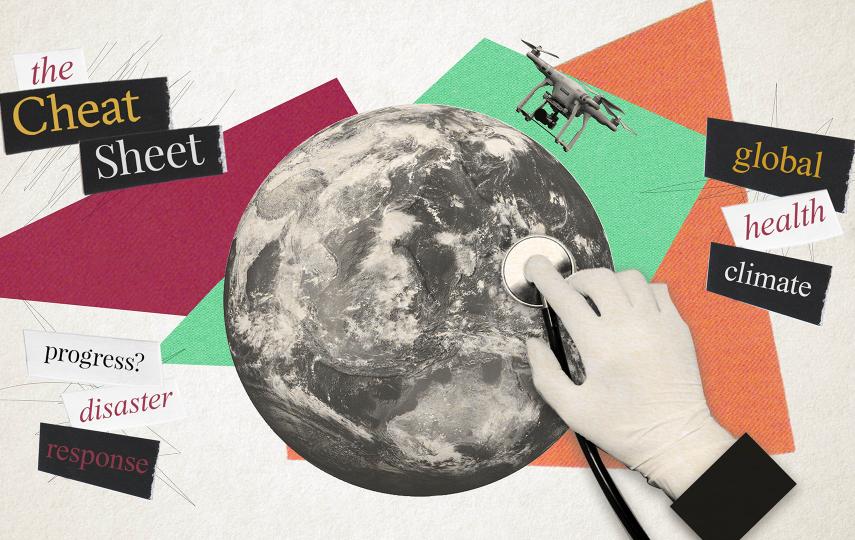The Humanitarian Innovation Fund (HIF) was set up just over 18 months ago, with money from the UK’s Department for International Development, the Swedish Foreign Ministry and the Canadian International Development Agency. It has so far given six small grants (up to US$32,000) and eight large grants (up to $238,000). Its manager, Nicolas Kroger, says what they have been trying to do is not just give grants, but also learn about innovation. “We are interested in `How do you innovate?’ and `What brought you to innovate?’ In a way the grant-making is just an excuse for the rest.”
Of course, for the applicants, it was more likely to be about the money, and the news that a new fund was open for business attracted a lot of interest. So far they have had 154 applications for the smaller grants and 570 for the larger sums. Some were from big international NGOs, but an impressive 70 percent came from local NGOs in developing countries. Disappointingly, these smaller NGOs received just one out of 14 grants given so far.
Says Kroger: “Some have really good ideas; it’s just that the way it’s pitched, it’s just not working out. It’s very hard to figure out exactly what’s supposed to be happening in the project. Or sometimes they are just trying their luck with a new donor. And some have obviously very genuine projects but they don’t fit our remit.” Now the fund is organizing a series of regional events to work with small NGOs on the quality of their proposals.
The system of large and small grants is about helping recipients with different stages of the innovation process, some of which, like identifying a problem and starting to think about solutions, don’t actually need large sums of money. Kroger says a lot of applicants did not really understand the concept. “They all tend to go for the big money,” he told IRIN, “which is a shame, and a little bit missing the point, in the sense that we see innovation as a process. It’s not just about your Eureka moment.”
Wheelchair grant
One organization which has embraced the concept is Motivation, an NGO which supports people with mobility disabilities around the world. They had identified a need for a wheelchair which could be used in emergencies like earthquakes, a chair which would be cheap, easy to transport, ready to use without needing complicated assembly, and able to cope with rough terrain.
Sarah Sheldon, the project manager, told IRIN HIF’s way of working exactly fitted the kind of project Motivation wanted to do. They received one of the small grants, and have used it to design a chair, build the first prototypes, and get the design tested and certified by the International Standards Organization. Now they are applying for one of the larger grants to trial and improve the chair and develop training and support materials for those who will use it.
“The way they [HIF] have of splitting up the funding is really useful,” says Sheldon. “They don’t have to commit to funding something which at the beginning is an unknown quantity, and we don’t have to design the whole project in one go; we can refine our plans as we go along.”
Radio project in CAR
Another bright idea being tested out with a HIF grant is an Internews project in the Central African Republic (CAR). They are working with a network of 11 community radio stations in remote areas. Every day, journalists in the capital make calls to each of these stations. With the news they receive they compile a daily shared bulletin which they distribute back to the local radio stations, transferring audio files by mobile phone. Meanwhile, the information is also used by the humanitarian community in Bangui to plot incidents such as disease outbreaks, refugee inflows and attacks by the Lord’s Resistance Army.
Two months into the project Internews’s director for humanitarian information projects, Jacobo Quintanilla, is excited by how well it is going.
Buying time
In some cases what HIF can do is buy time for busy humanitarian workers to stand back and examine what they are doing and how they are doing it. Paul Byars is a PhD research student at Edinburgh University and a water engineer who has worked in Liberia and Sierra Leone. Now, in association with Concern, he is in Sierra Leone’s Tonkolili District, trying to understand what happens to water projects hastily implemented in post-conflict situations, and how and why they so often fail.
“This sort of grant gives you space,” he says. “I worked for a long time with NGOs in Sierra Leone and Liberia, but you are so busy that you struggle to fit this kind of research around your normal work. At the moment it’s the other way round, and when I find a water problem in a village then I do a bit of engineering in my spare time.”
HIF’s Kroger, says he is very pleased with the quality of the projects that have been funded so far. But has the Fund succeeded in its other aim, to understand the process of innovation? “We are still starting out, but collaboration in applications making them more likely to proceed is an obvious idea which springs to mind. And it supports our hypothesis that collaboration helps incubate, shape and define good ideas.”
eb/cb
This article was produced by IRIN News while it was part of the United Nations Office for the Coordination of Humanitarian Affairs. Please send queries on copyright or liability to the UN. For more information: https://shop.un.org/rights-permissions





